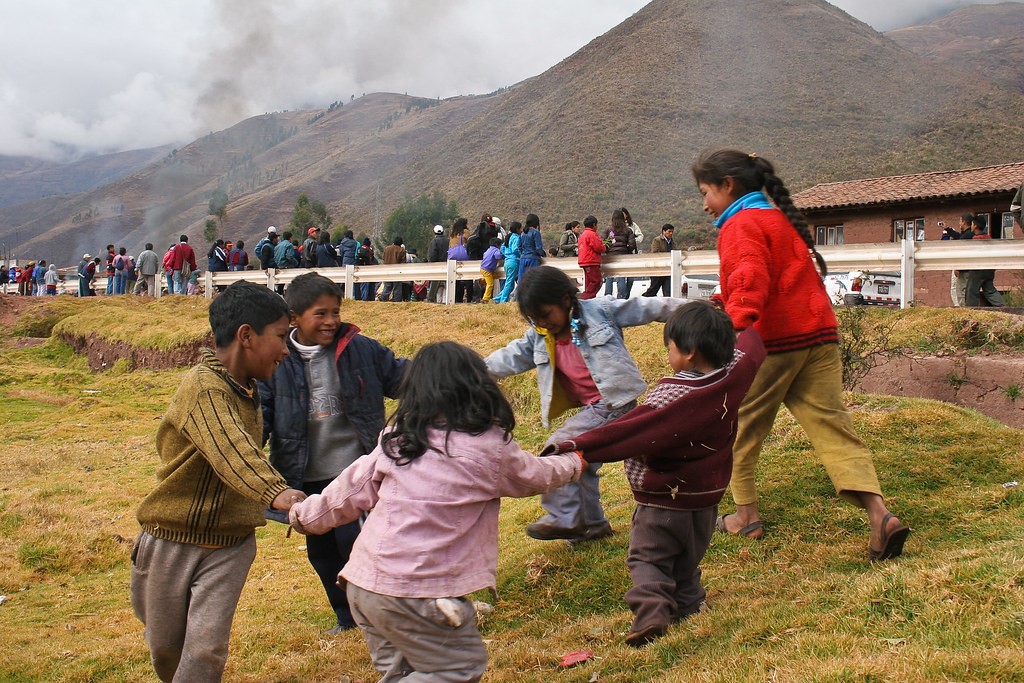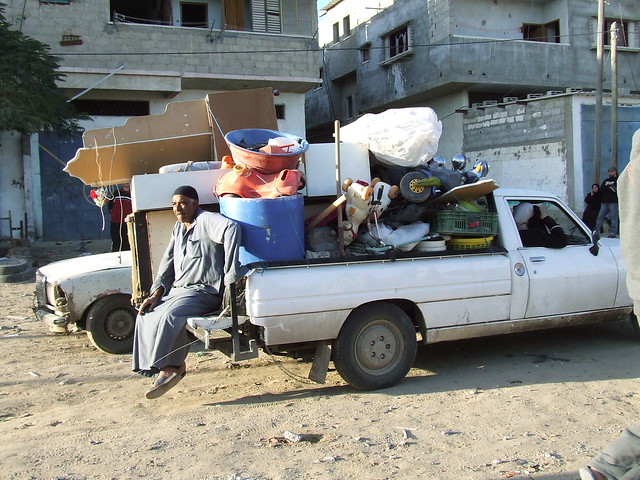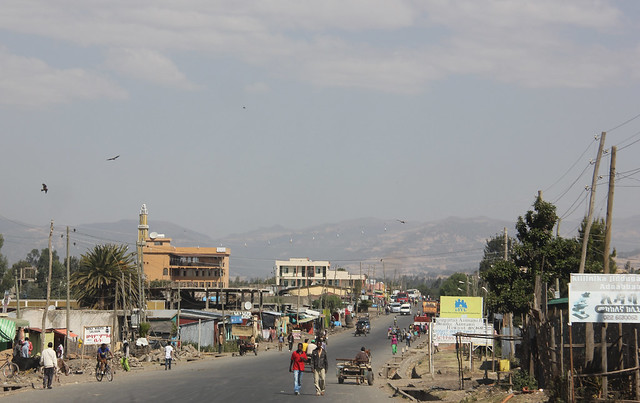
The poverty that affects so much of South America comes from a history of colonialism, which has left the region with extractive institutions including weak states, violence and poor public services. In order to combat these issues, it is vital to understand these top 10 facts about poverty in South America.
Top 10 Facts About Poverty in South America
- Dependence Theory: According to the Council of the Americas, the South American economy is suffering from the U.S.-China trade war, a drop in crude oil prices and generally worsening economic conditions throughout the region. This poor economic performance has been present in the region for a long time. NYU Professor Pablo Querubín noted in a lecture that this is largely due to Dependence Theory. This theory argues that poorer countries and regions will have to specialize in raw materials and agriculture due to the comparative advantage other countries and regions have in producing industrialized products such as computers, advanced technology and services. Therefore, because Latin America has a comparative advantage in producing agricultural products and oil, it will have much greater difficulty moving into the industrial sector.
- The Reversal of Fortune Theory: The South American economy has also had a difficult time growing because of its history of colonialism and extractive institutions. Professor Pablo Querubín also referenced the Reversal of Fortune Theory which explains how the pre-Columbian region of South America was so much more wealthy than pre-Columbian North America, yet those roles have reversed in the modern era. The reason is that South America put extractive institutions into place to send wealth back to Spain rather than “promote hard work or to incentivize investment, human capital, accumulation, etc.” Yet, in areas with low population levels, such as pre-Columbian North America, settlers had to establish inclusive institutions “designed to promote investment, effort, innovation, etc.”
- Political Instability: Political consistency has been rare in the history of South America. New leaders would often change the constitution when they entered office to better suit their political wishes. In fact, while the U.S. has only ever had one constitution with 27 amendments over the course of about 200 years, Ecuador had 11 separate constitutions within the first 70 years of its history. In Bolivia, there were 12 within the first 60 years. This instability and very quick political turnover have been detrimental to the steady growth of the economy and confidence in the government. Understanding the effects of this issue and the other top 10 facts about poverty in South America are integral to fighting poverty in the region.
- Inequality: Inequality is incredibly high in South America. As a result, the incredibly wealthy can afford to use private goods in place of public ones. For example, the rich use private schools, private health insurance, private hospitals and even private security forces instead of relying on the police. Therefore, there is very little incentive for the wealthy to advocate for higher taxes to improve public goods such as public education, police or public health initiatives. As a result, the public services available to the poor in Latin America are extremely lacking.
- Education: Education in South America is full of inequality both in terms of income and gender. According to the Programme for International Student Assessment, an institution which evaluates teenagers on their educational performance in key subject areas, most countries in South America perform below average. In one evaluation it determined that the highest-scoring country in South America, Chile, was still 10 percent below average. Furthermore, poor educational performance highly correlates with income inequality.
- Indigenous Women and Education: In addition, indigenous women are far less likely than any other group to attend school in South America. According to UNESCO, in Guatemala, 70 percent of indigenous women ages 20 to 24 have no education. The issue of unequal education spreads further to affect women’s livelihoods and presence in the South American workforce. According to the International Monetary Fund, about 50 percent of women in Latin America and the Caribbean do not work directly in the labor force. However, the International Monetary Fund also noted that “countries in LAC [Latin America and the Caribbean] have made momentous strides in increasing female LFP [labor force participation], especially in South America.”
- Teenage Pregnancy: One major driver of the cycle of poverty in South America is the persistence of teenage pregnancies which lead to impoverished young mothers dropping out of school and passing on a difficult life of poverty to their children. The World Bank reported that Latin America is the second highest region in terms of young women giving birth between the ages of 15 and 19 years old. Furthermore, a study called Adolescent Pregnancy and Opportunities in Latin America and the Caribbean interviewed several South American teen mothers including one who noted that sexual education was not the problem: “We knew everything about contraceptive methods,” she said, “but I was ashamed to go and buy.” Thus, the study advised that in addition to preventative methods for pregnancy such as education and the distribution of contraceptives, there needs to be action to “fight against sexual stereotypes.” Fortunately, there are activist campaigns such as Child Pregnancy is Torture which advocates for raising awareness about the issue of child pregnancy in South America and encourages the government to take steps such as increased sex education, access to contraception and the reduction of the sexualization of girls in the media.
- Food Insecurity: Hunger is a growing issue related to poverty in South America. According to the Food and Agricultural Organization of the United Nations, 39.3 million people in South America are undernourished, which represents an increase by 400,000 people since 2016. Food insecurity in the region as increased from 7.6 percent in 2016 to 9.8 percent in 2017. However, the issue is improving with malnutrition in children decreasing to 1.3 percent. Additionally, there are many NGOs such as the Food and Agricultural Organization of the United Nations (FAO), Action Against Hunger and Pan American Health Organization of the World Health Organization (PAHO) that are implementing vital programs throughout the continent to fight hunger.
- Migration: The economic instability and rising poverty in South America have caused many people to migrate out of the region. Globally, 38 million people migrated out of their countries last year with 85 percent of that 38 million coming from Latin America and the Caribbean. Dr. Manuel Orozco from the Inter-American Dialogue think tank stated that “The structural determinant is poor economic performance, while demand for labour in the United States and the presence of family there encourages movement.”
- Violence: The high level of violence in South America exacerbates the cycle of poverty in South America. Fourteen of the 20 most violent countries in the world are in South America and although the region only contains eight percent of the world’s population, it is where one-third of all murders take place. Dr. Orozco went on to say that “There’s a strong correlation between migration and homicide. With the potential exception of Costa Rica, states are unwilling or unable to protect citizens.”
Fighting poverty in South America is dependent upon an understanding of the history and realities of the region. Hopefully, these top 10 facts about poverty in South America can shed light upon the cycle of poverty in the region and how to best combat it in the future.
– Alina Patrick
Photo: Flickr
 The Gaza Strip, a highly controversial tract of land, borders both Israel and Egypt. Gaza Strip’s population of 1.8 million, living in an area about the size of Detroit, endures severe hardships. Gaza has a poverty rate of
The Gaza Strip, a highly controversial tract of land, borders both Israel and Egypt. Gaza Strip’s population of 1.8 million, living in an area about the size of Detroit, endures severe hardships. Gaza has a poverty rate of  The ability to consistently access nourishment is vital for all people. In regions affected by poverty, like Central America, many families lack this ability. These 10 facts will provide a glimpse at food insecurity in Central America, how it affects the lives of the people who live there and what has been done to address it.
The ability to consistently access nourishment is vital for all people. In regions affected by poverty, like Central America, many families lack this ability. These 10 facts will provide a glimpse at food insecurity in Central America, how it affects the lives of the people who live there and what has been done to address it.
 South Africa possesses one of the strongest economies and lowest hunger rates in the continent of Africa. It is a middle-income emerging economy with a profusion of natural resources and well developed legal, communication, energy and transport systems. In recent years, its economic growth has declined to 0.7 percent and records show official unemployment as 27 percent. The cost of food in South Africa has increased and citizens are finding it more difficult to acquire food. South Africa’s economic state is one of the main reasons why millions of South Africans are food insecure, unable to consistently access or
South Africa possesses one of the strongest economies and lowest hunger rates in the continent of Africa. It is a middle-income emerging economy with a profusion of natural resources and well developed legal, communication, energy and transport systems. In recent years, its economic growth has declined to 0.7 percent and records show official unemployment as 27 percent. The cost of food in South Africa has increased and citizens are finding it more difficult to acquire food. South Africa’s economic state is one of the main reasons why millions of South Africans are food insecure, unable to consistently access or 
